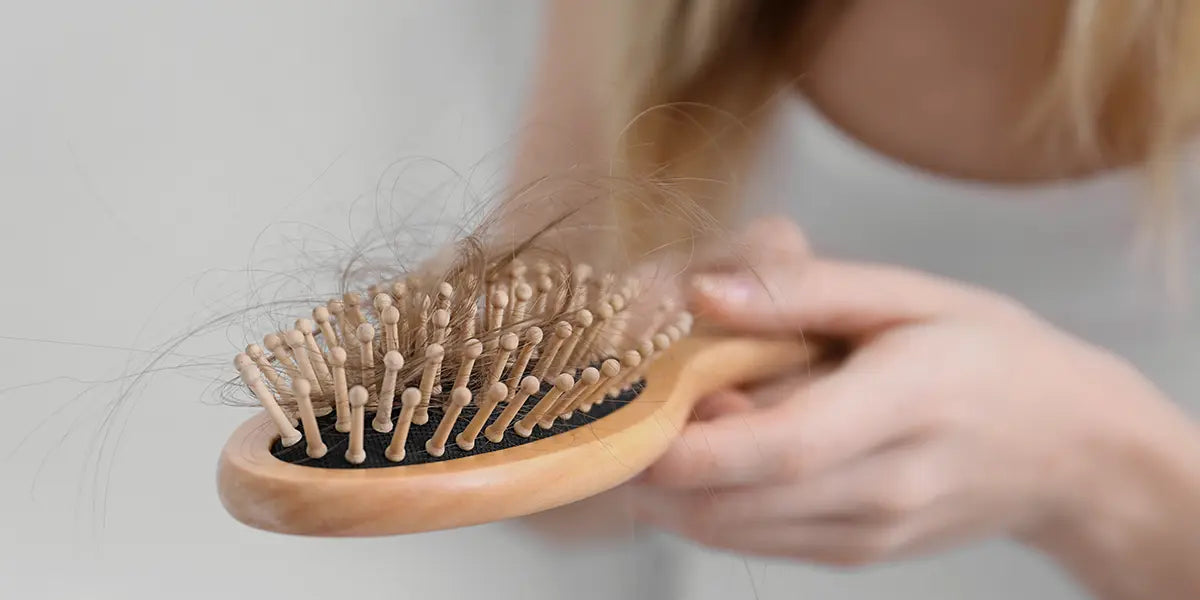It’s a common misconception that pattern hair loss only affects men. Women can also experience progressive hair loss related to hormonal changes, aging and several other factors.
What is female pattern hair loss, who does it affect and can you do something about it? This article will cover all the essential information you’ll need to understand this complex hair loss disorder and provide links to other relevant XYON articles that focus on specific treatment options for women.
What is female pattern hair loss?
Female pattern hair loss (FPHL) is a progressive hair loss disorder that typically affects women as they age. It’s not clear exactly what triggers it, but hormonal changes (specifically, decreased estrogen during and after menopause) may play a role. Female pattern hair loss happens slightly less frequently than hair loss in men, affecting approximately half of women over the age of 70 and has a higher prevalence in Caucasian women.
And it’s more than just a cosmetic issue. Studies have shown that pattern hair loss negatively affects the mental health outcomes and quality of life of female patients. Specifically, women with hair loss report increased social anxiety, depression and levels of emotional stress (Bertoli et al., 2020).
What does female pattern hair loss look like?
The regions of the scalp affected by female pattern hair loss are different to the balding patterns seen in men. Clinicians use a different scale called the Ludwig Scale to assess how advanced female pattern hair loss is. Early signs of hair loss in women include a gradually widening hair part that spreads into diffuse thinning across the entire scalp. Other examples of hair loss include a thinning ponytail, or more shedding than usual when in the shower or during regular hair styling. In contrast to men, women usually retain hair along the front of the hair line.
Female pattern hair loss causes
Experts aren’t sure what exactly causes female pattern hair loss but there is research that suggests there is likely a hormonal component involved, in addition to contributions by genetics and certain environmental triggers. Though the causes may be different, the changes that happen within the hair follicle during female pattern hair loss are identical to male pattern hair loss. The underlying process is follicular miniaturization, which you can learn more about by visiting this article on androgenetic alopecia. Follicular miniaturization is disruptive to the hair growth cycle and results in the production of progressively weaker hairs.
Of note is the drop in estrogen levels associated with menopause. Similar changes in estrogen, such as those experienced immediately after pregnancy, have been linked to other types of hair loss. Prior to menopause, estrogen may help regulate scalp levels of androgens. It’s not clear whether estrogen does this by directly blocking the 5-alpha reductase enzyme (similar to the way finasteride works) or if it causes testosterone to be converted into hormones other than dihydrotestosterone that are weaker and less likely to bind to androgen receptors and trigger hair follicle shrinkage.
On the topic of genetics, one study found a positive family history in 62% of patients with female pattern hair loss. In particular, thinning on the mother’s side of the family has been shown to be a significant marker for female pattern hair loss (Lukasik et al., 2020). One clinical study identified 49 potential genetic markers specific to early onset female pattern hair loss (i.e. hair loss that begins prior to menopause). These findings will require additional studies and data to substantiate but provide some early insight into how early and regular female pattern hair loss might differ (Ohn et al., 2022).
Can female pattern hair loss be reversed?
Potentially. Like its male counterpart, the key to successfully treating and potentially reversing female pattern hair loss lies in early identification. Unlike male pattern hair loss, which has a range of clinically proven treatments, it’s less clear what agents or methods are most effective for treating pattern hair loss in women. Medications such as finasteride and minoxidil have been shown to have some clinical benefit. Spironolactone, an antiandrogen that helps the effects of androgen hormones on the body, has also been trialed in cases of female pattern hair loss with good results (Ramos et al., 2023).
Female pattern hair loss: Takeaway
Female pattern hair loss is a unique and complex hair loss disorder that has many possible genetic, hormonal and environmental causes. Unlike male pattern hair loss, which is primarily driven by the response to dihydrotestosterone (DHT), DHT appears to play less of a role in the development of female pattern hair loss.
Hair loss in women is also classified using a different scale, called the Ludwig scale. It’s especially important for female patients to pay attention to a gradually widening hair part as a tell-tale sign of this type of hair loss. As for whether female pattern hair loss can be reversed, it seems that in many cases, hair regrowth can be achieved as long as hair loss is caught early and an appropriate treatment is started. Several hair loss medications that have been clinically proven to be effective in treating balding in men show some potential in treating hair loss in women.
If you’re concerned about hair loss, we encourage you to reach out to a doctor to discuss your treatment options. Whether you’re experiencing female pattern hair loss or a different type of hair loss, it’s important to involve a trusted healthcare professional in the process of identifying and treating your hair loss.




